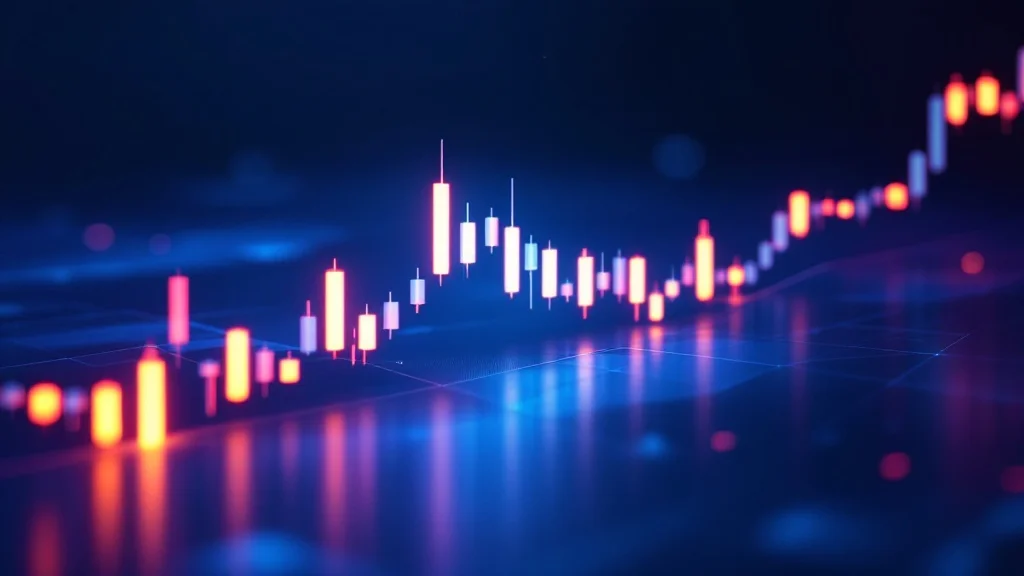- A narrowing spread can signal a coming slowdown.
- Inversions often precede recessions.
Treasury Yield Curve Trading Strategies

In financial markets, not all indicators are created equal. But when it comes to anticipating macroeconomic shifts or gauging institutional sentiment, the Treasury yield curve holds a unique edge. It's not just a visual of bond yields — it's a living map of what traders, policymakers, and investors believe about the future of interest rates, inflation, and growth.
Article navigation
- 📐 What Is the Treasury Yield Curve?
- 📊 Yield Curve Structures: What Shapes Really Tell You
- 📈 Trading the Yield Curve: Steepening vs. Flattening Setups
- 📐 Yield Spreads and Duration-Based Rotations
- 🔄 Interpreting Yield Curve Inversions for Traders
- 📈 Practical Yield Curve Trading Strategies
- Start trading
- 🧠 Conclusion: Curve Ahead — Know the Road
- 📚 References
Instead of relying solely on lagging indicators or technical setups, professional traders increasingly look at how the curve bends, steepens, or inverts. Each movement carries a message — and if read correctly, can lead to powerful trade setups.
Trading the yield curve isn’t about prediction. It’s about reading expectations — and positioning ahead of the crowd.
This guide breaks down how to approach yield curve trading as a strategy, not just a macro curiosity. From classic 2s10s and 5s30s spread trades to curve steepeners, butterfly structures, and duration hedging — you’ll get a full playbook that blends structure, timing, and risk awareness.
Let’s get into it.
📐 What Is the Treasury Yield Curve?
The Treasury yield curve illustrates the return investors demand for lending money to the U.S. government over various time frames. From short-term notes to long-dated bonds, each maturity carries a specific yield, and the curve connects these yields to show the market’s expectations about time, risk, and monetary policy.
But it’s more than a chart — it’s a real-time reflection of investor psychology.
When the curve is plotted, it forms shapes that reflect macroeconomic sentiment:
• A rising curve implies confidence in future growth.
• A flattening or inverted curve suggests caution, signaling concerns like slowing GDP or aggressive rate hikes.
Why It Matters for Traders:
• It reveals where institutional money is flowing.
• It helps gauge upcoming moves in interest rates and inflation.
• It provides setups for strategies like steepeners, flatteners, and butterfly trades.
Instead of chasing short-term signals, traders use the curve to understand how the bond market prices the future — and position ahead of the crowd.
📊 Yield Curve Structures: What Shapes Really Tell You
The yield curve isn’t just a technical chart — it’s a psychological x-ray of the bond market. Its slope and shape often shift before major turning points in the economy and markets.
✅ Upward-Sloping (Normal) Curve
This structure means long-term bonds yield more than short-term ones. It’s typically seen during expansion phases, when investors expect inflation and economic growth ahead.
💡 For traders: This favors risk-on strategies, particularly steepener trades, which benefit from widening yield differentials between 2-year and 10-year Treasuries.
⚠️ Inverted Curve
When short-term yields climb above long-term ones, markets flash red. This inversion reflects investor belief in upcoming rate cuts or a possible recession.
💡 Trading play: Defensive positions. Long-duration bonds or strategies that profit from falling yields become attractive.
🟨 Flat Curve
A flat yield curve means yields across durations are nearly identical — a sign of indecision or policy transition.
💡 Strategy shift: Many traders step back or hedge both ends of the curve, anticipating an eventual break either up or down.
These formations are never random. They map how institutions — and central banks — price in the future. Spotting their shifts in real-time gives you a strategic advantage few retail traders possess.
📈 Trading the Yield Curve: Steepening vs. Flattening Setups
Bond traders don’t just observe the yield curve — they act on its dynamic shifts. Two of the most powerful patterns are curve steepening and flattening. Each points to distinct economic narratives and offers high-probability trade opportunities.
🔺 When the Curve Steepens
A steepening yield curve suggests that long-term rates are rising faster than short-term ones. This often reflects optimism about future growth or inflation expectations picking up steam.
Key signals:
• Long-term bond yields jump after dovish Fed signals
• Demand weakens for long-dated debt
• Commodities rally
Trade setups:
• Long short-term bonds (2Y), short long-term bonds (10Y or 30Y)
• Long cyclicals (industrials, energy), short low-beta sectors
• Bullish on inflation-sensitive assets
🔻 When the Curve Flattens
Flattening implies short-term yields are catching up with (or exceeding) long-term rates — a common sign of monetary tightening or economic slowdown.
Key signals:
• Fed rate hikes drive up short maturities
• Investors seek safety in long-term bonds
• Markets price in recession risks
Trade setups:
• Long long-duration bonds (e.g. TLT), short short-duration bonds
• Long defensive equities (healthcare, utilities)
• Play spread compression via futures or ETF pairs
💡 Tactical edge: Don’t trade blindly — monitor Fed rhetoric, CPI, and yield spreads. The curve moves because of expectations, not just numbers.
📐 Yield Spreads and Duration-Based Rotations
Yield spreads — like 2s10s, 5s30s, or 10s30s — are more than just math. They reflect how the market perceives monetary policy, growth risk, and rate expectations across different time horizons. Traders use these differentials to rotate capital between instruments with varying duration exposure.
🔍 Understanding Yield Spreads
• 2s10s Spread: Measures the difference between 2-year and 10-year Treasury yields.
• 5s30s Spread: Shows deeper long-term sentiment.
- Steepens during reflation trades.
- Flattens when markets expect long-term stagnation or QE.
🧠 Duration Trade Logic
The longer the bond’s maturity, the more sensitive it is to interest rate shifts (higher duration). Traders hedge rate exposure or speculate on policy pivots by rotating across the curve:
• Flattening Play: Long 30Y / Short 5Y
• Steepening Play: Short 30Y / Long 5Y
• Use futures like ZF (5Y), ZN (10Y), ZB (30Y) for leveraged curve trades.
⚠️ Watch Out for “False” Signals
Sometimes, the curve flattens due to QE distortions or global yield compression — not recession. Always cross-check with credit spreads, economic surprises, and inflation expectations.
🔄 Interpreting Yield Curve Inversions for Traders
One of the most discussed — and often misunderstood — signals in macro trading is the yield curve inversion. It occurs when short-term bond yields exceed long-term yields, indicating a shift in market expectations.
Rather than showing optimism, this reversal often reflects fears of an economic slowdown.
📉 What It Really Tells Us
An inverted curve isn’t about “free money” on short-term bonds. It’s a sign that:
• Traders expect weaker growth ahead
• The central bank may be forced to cut rates
• Long-term risks are seen as lower than immediate ones
It flips the logic of the bond market — and that’s exactly why it matters.
🛠 Trading Implications
• Buy duration: Long bonds often rally post-inversion
• Position for volatility: Macro funds may hedge aggressively
• Monitor spreads: 2s10s and 3m10y are key recession proxies
Yield curve inversions don’t cause recessions — they forecast the expectations of smart money preparing for one.
When paired with deteriorating data (e.g., employment, credit spreads), an inversion becomes a powerful confirmation signal for tactical shifts.
📈 Practical Yield Curve Trading Strategies
Now let’s shift from theory to real-world application. How can traders actively leverage signals from the yield curve to build profitable strategies?
Here are three key approaches:
1. Steepener Trades
When the spread between short- and long-term yields widens, it signals expectations of rising inflation or a shift in central bank policy.
How to trade it:
• Go long on long-duration bonds (e.g., 10-year or 30-year Treasuries)
• Go short on short-term maturities (e.g., 2-year notes)
• Use spread-based strategies like futures curve trades or options on bond ETFs
This strategy benefits from a steepening curve when inflation or growth is expected to rise.
2. Flattener Trades
When the curve begins to flatten, the market is often pricing in a slowing economy or tighter monetary policy.
Tactical setup:
• Short long-term yields
• Long short-term yields
• Implement with futures, swaps, or curve-flattening ETFs
This setup is common among institutional players preparing for macroeconomic tightening.
3. Using Inversion as a Trigger
An inverted yield curve is more than just a warning — it’s a call to rebalance:
• Reduce exposure to cyclical equities
• Increase allocation to safe-haven assets like gold and bonds
• Prepare for rate cuts using long-dated options or structured notes
💡 The yield curve isn’t just about interest rates — it’s a forward-looking market psychology indicator. Mastering it means anticipating what others have yet to react to.
🧠 Conclusion: Curve Ahead — Know the Road
Understanding the Treasury yield curve isn’t just for economists or central bankers — it’s a powerful framework for any trader who wants to decode macro conditions and front-run major shifts in sentiment.
Whether you’re hedging against recession, betting on economic recovery, or rotating between sectors — mastering yield curve signals gives you a long-term edge in any asset class.
As always, stay informed, stay tactical, and trade with purpose.
📚 References
- Federal Reserve Economic Data (FRED) – https://fred.stlouisfed.org
- U.S. Department of the Treasury – https://home.treasury.gov
- Investopedia – https://www.investopedia.com
- CME Group Yield Curve Tools – https://www.cmegroup.com
- Nasdaq Market Analysis – https://www.nasdaq.com
FAQ
What does a steep yield curve mean for traders?
A steep yield curve suggests investors expect stronger economic growth and rising inflation. For traders, it's often a green light for bullish trades in risk assets and long-duration bonds.
How reliable is yield curve inversion as a recession signal?
Historically, yield curve inversions have preceded most major recessions. While timing may vary, it remains one of the most consistent leading indicators of economic downturns.
Can retail traders access yield curve strategies?
Yes. Retail traders can use ETFs, bond futures, or interest rate swaps to mirror institutional strategies. Many platforms offer tools for analyzing spread trades and macro shifts.
Is yield curve trading better for long-term or short-term strategies?
It's mostly a macro-level tool, ideal for swing trading or portfolio rebalancing. However, intraday traders can still use curve changes as context for risk management or confirmation.
What's the difference between nominal and real yield curves?
Nominal curves are based on standard Treasury rates. Real yield curves adjust for inflation expectations (e.g., via TIPS). Both offer valuable but distinct insights into market sentiment.
